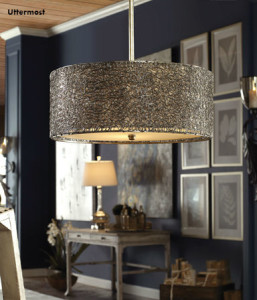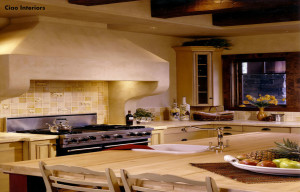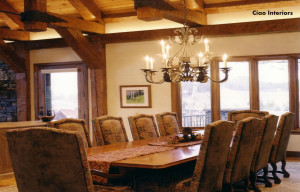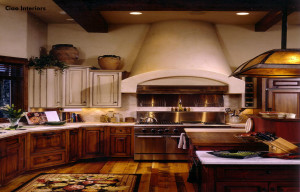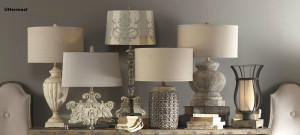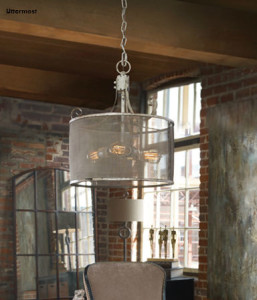Interior Lighting
Remember the days of florescent lights and the too bright hallways in your school walls? Where everything seemed to be under a microscope? Where the light not only showed your most unappealing facial flaws (thank you to puberty) but also seemed to show absolutely everything else – the paint peeling off the walls, the dirt still on the just waxed floor from thousands of kids stomping on it every day. Particularly for me, I have always been sensitive to lights. The florescent lights did nothing for me but give me headaches from their brightness. And now as an adult, I cringe whenever I stumble into a florescent lighted room. Thus, the desire to write this post.
The interior lighting of your home should be beautiful – not limiting and most definitely more elegant than those fluorescent bulbs. Separate where you work and where you live by creating a more relaxing environment. To do this, there are a number of other alternatives to florescent lights for each space in your home. While some options are more expensive, it really doesn’t have to break the bank to style up the lighting in the place you spend your evenings.
Read on for some styling tips to rid your house of bad lighting and let’s all forget about the days of our younger years.
Layering with Light
One of the most well know tricks to add subtle beauty to your home is by incorporating what designers call “layers of light.” This means using different types of lighting options in each room. Particularly, use what are considered the main four selections – accent, ambient, decorative and task lighting.
Accent Lighting refers to lighting fixtures that highlight the room’s architectural beauty or certain pieces of furniture. Use a spot light to accentuate your favorite painting hung above the fireplace or use track lights to emphasize the vaulted ceiling, enticing your house guests to look up.
Ambient Lighting is another word for “overhead fixtures.” This type of light is for use in illuminating the entire room. Most houses make use of ambient light already but to really add a warm layer, pendant lights are a unique option. Natural light from your window is also considered a form of ambient light. Try to capitalize on the natural light in your house by ensuring your drapes don’t cover the windows when open.
Decorative Lighting may be considered the easiest form of lighting to incorporate into your space. This form of lighting includes lamps and chandeliers – anything that adds a unique flair to your home. Place a lamp on your entry way table or on a side table in your living room to make the room feel smaller and more intimate. Use chandeliers in the entry way and dining area making a statement to each room. Another form of decorative lighting that is often overlooked is the use of wall sconces. Not only do they add to the beauty of the home, but if placed strategically they can be used as accent lighting to emphasize the interior beauty, drawing someone’s eye to the stone wall or wood beams.
Last but not least, Task Lighting refers to lights that help you do whatever it is you are doing. Use task lighting under your kitchen cabinets when chopping vegetables or by making use of reading lamps for your lazy Sundays at home.
If incorporated in each room, layers of light will add a warm glow to your space, making it more intimate and in turn, more relaxing.
Install Dimmers
This may be an obvious trick to some of you, but often dimmers are something we all forget about. Dimmers are an easy fix to overhead lights with too much power. With a quick exchange for the current light switch in your home, you can instantly add beautiful ambient lighting for just a few dollars. And what’s even better, after the dimmers are installed you are likely to see your electric bill decrease. You will quickly find that the lights turned up all the way will be just too much.
Wattage
Opt for different wattage bulbs in each room. One of the common mistakes with interior lighting is that the light is either too bright or too dim (again, think about those 1970s and 80’s fluorescent overhead bulbs in your kitchen). And if you’re like the rest of us, we typically head to the store when a light burns out and buy the exact same bulb time after time. But that approach is all wrong. The trick is in knowing what wattage should go in each light fixture and to spread the wattage out amongst a room. Use low wattage bulbs for a kitchen that has a lot of natural light. Opt for higher wattage bulbs in darker spaces where there aren’t many lighting options. In chandeliers, use lower wattage bulbs due to the fact that the more lighting sockets there are, the more your light can be spread across the entire unit. The same reasoning can be put into effect for under the cabinet track lights. If there is more than one lighting fixture, use lower watt bulbs to help evenly spread light without overwhelming the space.
Bathroom Lighting
We commonly are asked about updating powder rooms in addition to doing a lot of our room service business (see our room service blog titled New Year – New You – New Home) in bathroom remodels and/or consultations.
And we cannot stress this enough – one of best improvements that can be made to a bathroom is by updating the light fixtures. All too common, we see homes where the bathroom has one central overhead fixture. While illuminating the whole room, the problem with this is that the stand-alone fixture causes shadows in the mirror and in turn ultimately gives you a poor view of your reflection. When redoing the lighting in your bathroom, do whatever you can to opt for wall mounted fixtures on the side(s) of the mirror. Not only will the wall sconces help you see yourself better, they will also add a beautiful element to your room, regardless of the bathroom size.
Your One Stop Shop for All Your Lighting Needs
For further guidance on how to better the lighting in your own home, make use of our room service option or stop by and ask us a few questions. We have thousands of decorative pieces and specialty lighting companies at our fingertips (to view some or our favorites, see Uttermost and Light & Living) and the experience to help you with whatever question you may have.
